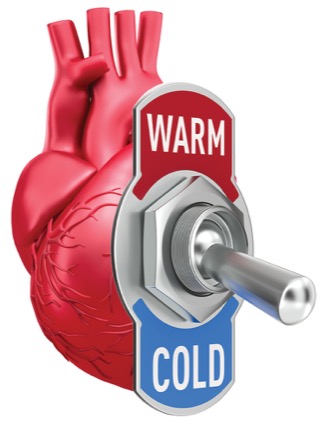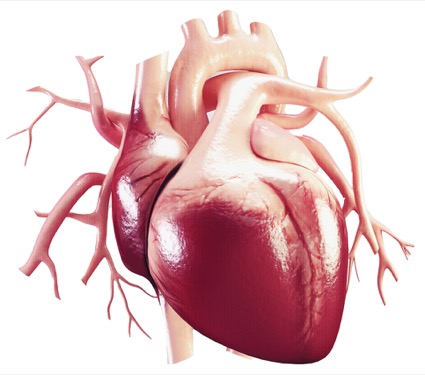Originally published by our sister publication Anesthesiology News
HALIFAX, Nova Scotia—A new study has found that breakthrough temperatures in excess of 37.5° C during the first 48 hours of targeted temperature management (TTM) therapy are associated with favorable neurologic outcomes and decreased mortality in post–cardiac arrest patients.
The results, the researchers said, do not align with the general impression that breakthrough or rebound hyperthermia is a marker of poor prognosis in these patients, and instead suggest that any breakthrough temperature greater than 37.5° C during or after the TTM maintenance phase may actually be an indicator of more robust underlying patient physiology.
According to Annie Li, MD, a resident at the Schulich School of Medicine and Dentistry at Western University, in London, Ontario, previous research into TTM for post–cardiac arrest patients with return of spontaneous circulation has yielded conflicting findings on whether breakthrough temperatures during and after TTM are associated with negative patient outcomes.
“Nevertheless, in recent TTM literature, including studies by Nielsen [N Engl J Med 2013;369(23):2197-2120] and Dankiewicz [N Engl J Med 2021;384(24):2283-2294], it would seem that we are moving towards a paradigm shift in terms of cooling patients after cardiac arrest,” Li said.
As such, the primary objective of the study was to assess the association between breakthrough temperatures (>37.5° C) during TTM and neurologic outcome and mortality in the ICU.
To do so, Li and her colleagues identified 840 post–cardiac arrest patients in an administrative hospital database, all of whom had attained return of spontaneous circulation and received TTM between Jan. 1, 2014, and June 30, 2020. Patients were excluded from the study if TTM was intentionally discontinued prior to its completion or if TTM was completed outside the London Health Sciences Centre.
The study’s exposure variable was the presence or absence of breakthrough temperatures, which the investigators defined as any temperature greater than 37.5° C within 48 hours of TTM initiation. The primary outcomes were ICU death and favorable neurologic outcome, which was defined as a cerebral performance category score less than or equal to 2.
Focus on Breakthrough Temperatures
Presenting at the 2022 annual meeting of the Canadian Anesthesiologists’ Society (abstract 110), Li explained that 597 participants (mean age, 61 years; 69% male) were included in the final analysis. Among these, 61% suffered out-of-hospital cardiac arrests, 75.1% were witnessed and 39.3% had an initial shockable rhythm. Patients’ average temperature up to 48 hours after TTM initiation was 34.8±1.0° C; average ICU stay was 11±25 days; and 54% of patients (n=325) died while in the hospital.
The researchers performed a series of multivariable logistic regression analyses to determine the association between favorable neurologic outcome or ICU death and a host of factors, including age, diabetes, coronary artery disease, baseline cerebral performance category score, renal replacement therapy, out-of-hospital versus in-hospital arrest, witnessed cardiac arrest, shockable rhythm, ST-segment elevation myocardial infarction and breakthrough temperature within 48 hours of TTM initiation.
After adjusting for possible confounders, the multivariable logistic regression model revealed an association between breakthrough temperatures more than 37.5° C within 48 hours of TTM initiation and favorable neurologic outcome (odds ratio [OR], 1.7; 95% CI, 1.1-2.7; P=0.025).
“In keeping with Nielsen’s 2013 study, the average core temperature was not significantly associated with neurological outcome [P=0.10], only the breakthrough temperature,” said co-investigator and Jason Chui, MBChB, an associate professor of anesthesia and perioperative medicine at Western University.
Other variables found to be associated with favorable neurologic outcome included witnessed cardiac arrest (OR, 1.18; P=0.01), shockable rhythm (OR, 2.95; P<0.001) and a baseline cerebral performance category score less than or equal to 2 (OR, 4.54; P=0.02).
Multivariable analysis also found that breakthrough temperatures greater than 37.5° C were associated with lower risk for death in the ICU (OR, 0.4; 95% CI, 0.3-0.6; P<0.0001). Similarly, Kaplan-Meier survival analysis revealed a survival benefit with breakthrough temperatures greater than 37.5° C (P<0.0001).
As the investigators concluded, the findings may be attributed to an intact thermoregulation system, which they said suggests either less neurologic injury or a more robust patient physiology. The results also indicate that patients without any breakthrough temperatures may require closer attention after the return of spontaneous circulation than previously anticipated.
“There is a paradigm shift from cooling patients to the prevention of hyperthermia, in the post–cardiac arrest period,” Li explained. “And I think this was demonstrated in our retrospective study.”
Hilary P. Grocott, MD, a professor of anesthesia at the University of Manitoba, in Winnipeg, called the study “very interesting” and said it adds to the growing body of literature that challenges clinicians’ concepts of hyperthermia after cardiac arrest.
“However,” she added, “the evidence is still predominated by retrospective studies, making the next logical step a prospective observational or even randomized controlled trial of hyperthermia treatment, or no treatment. There is still much to learn about the management of these critically ill patients.”
By Michael Vlessides
Chui, Grocott and Li reported no relevant financial disclosures.


